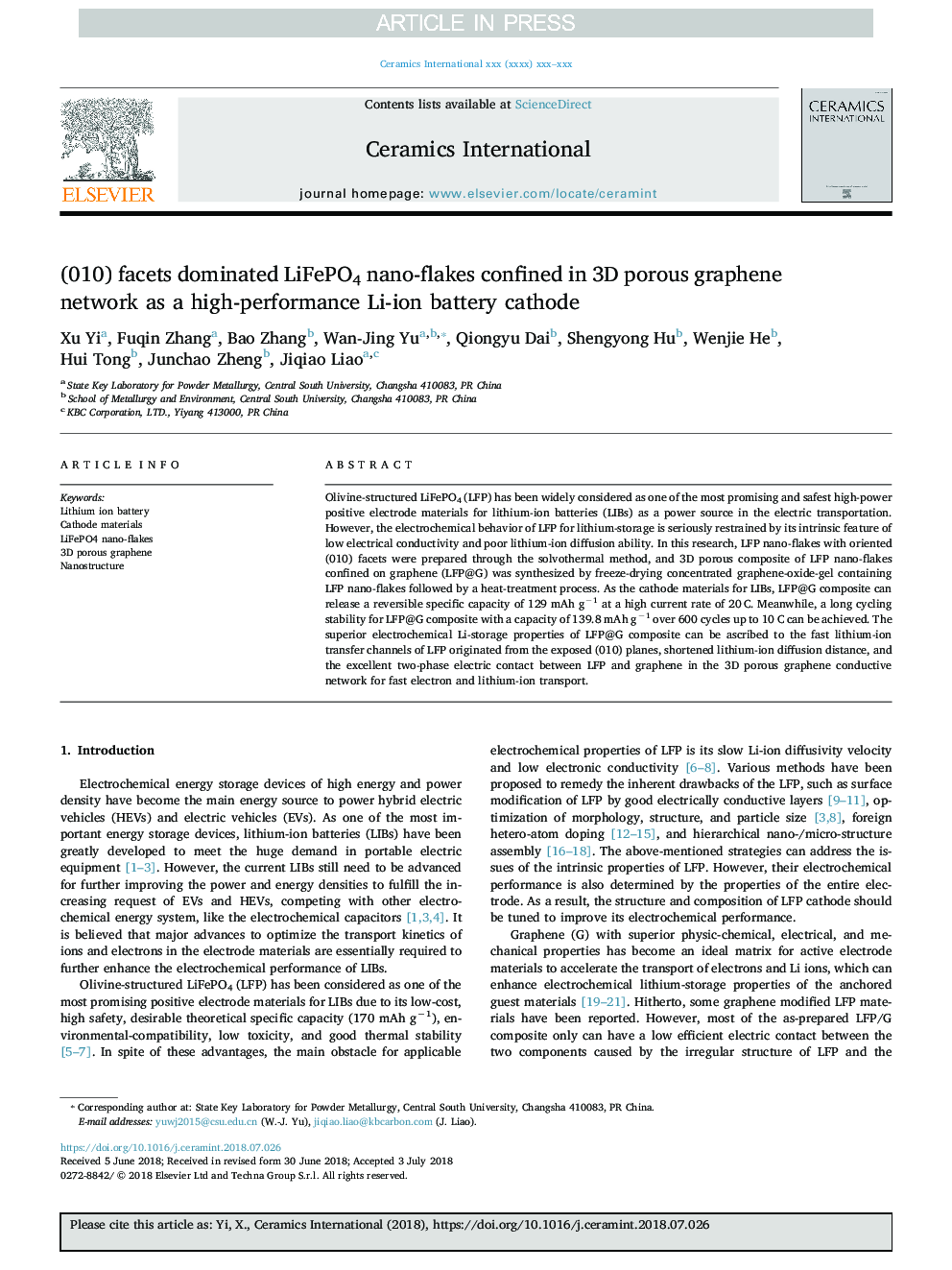| Article ID | Journal | Published Year | Pages | File Type |
|---|---|---|---|---|
| 8948501 | Ceramics International | 2018 | 8 Pages |
Abstract
Olivine-structured LiFePO4 (LFP) has been widely considered as one of the most promising and safest high-power positive electrode materials for lithium-ion batteries (LIBs) as a power source in the electric transportation. However, the electrochemical behavior of LFP for lithium-storage is seriously restrained by its intrinsic feature of low electrical conductivity and poor lithium-ion diffusion ability. In this research, LFP nano-flakes with oriented (010) facets were prepared through the solvothermal method, and 3D porous composite of LFP nano-flakes confined on graphene (LFP@G) was synthesized by freeze-drying concentrated graphene-oxide-gel containing LFP nano-flakes followed by a heat-treatment process. As the cathode materials for LIBs, LFP@G composite can release a reversible specific capacity of 129 mAh gâ1 at a high current rate of 20â¯C. Meanwhile, a long cycling stability for LFP@G composite with a capacity of 139.8 mAh gâ1 over 600 cycles up to 10â¯C can be achieved. The superior electrochemical Li-storage properties of LFP@G composite can be ascribed to the fast lithium-ion transfer channels of LFP originated from the exposed (010) planes, shortened lithium-ion diffusion distance, and the excellent two-phase electric contact between LFP and graphene in the 3D porous graphene conductive network for fast electron and lithium-ion transport.
Related Topics
Physical Sciences and Engineering
Materials Science
Ceramics and Composites
Authors
Xu Yi, Fuqin Zhang, Bao Zhang, Wan-Jing Yu, Qiongyu Dai, Shengyong Hu, Wenjie He, Hui Tong, Junchao Zheng, Jiqiao Liao,
